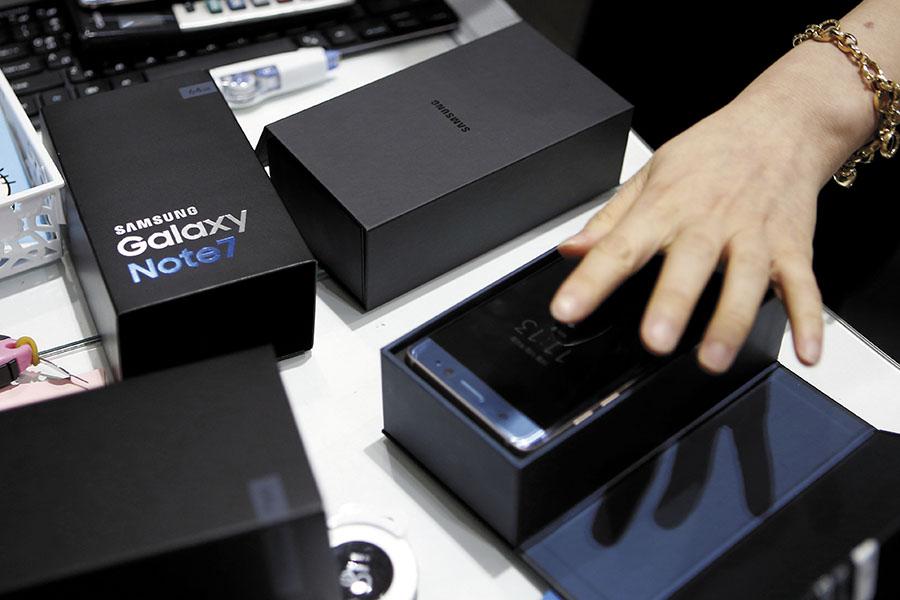
What now for Samsung after the Note 7 fiasco?
Its own handsets—S7 and S7 Edge—stand to benefit; but the brand won't escape unscathed
Samsung electronics invented the phablet-with-a-stylus, with its Note series. However, with the Note 7, which initially earned rave reviews, the Korean smartphone giant has shot itself in the foot. Samsung launched the 5.7-inch Note 7 in August this year, only to issue a global recall the following month after it said it had received reports, by September 1, of 35 handsets catching fire. On October 11, the company said it was permanently halting production of the flagship phablet.
The exact reason for the Note 7’s heating up is still not clear. In the meantime, while there’s no phablet-with-a-stylus in the market, immediate beneficiaries will include Samsung’s own Galaxy S7 and S7 Edge. Samsung has been promoting these two models through full-page ads in national dailies in India, where it is the leading smartphone vendor.
“There might be an impact on the premium segment during Q4 2016 [October-December, 2016] but Samsung will look forward to drive S7 Edge as its premium flagship to attract potential buyers of, or upgraders to, the Note 7,” wrote analysts Neil Shah and Tarun Pathak of Counterpoint Technology Market Research in a note on October 14. “Tough competition from Apple’s iPhone 7 series, Google Pixel and Moto Z beckons in Q4 2016 to fill the gap left by Note 7.” Samsung was set to sell a quarter of a million Note 7 handsets in 2016 in India alone, says Counterpoint’s estimates, which would have earned revenues close to $100 million.
The timing of this development is a mixed bag for Samsung: At the global level, “Samsung’s competitors have been caught by surprise by the Note 7 recall,” wrote Ian Fogg, senior director for mobile & telecom at consultancy IHS, in an October 11 analysis. Most manufacturers had chosen not to launch smartphones with large screens (5.5 inches and above) at this time of the year because they would have to compete with Samsung’s Note 7 and the iPhone 7 and 7 Plus. “As a result, they are poorly placed to raise sales quickly in reaction to the Note 7 recall,” Fogg says. And while Google’s Pixel smartphone has been launched at what now looks like an ideal time, IHS estimates Pixel’s production is less than a quarter of Samsung’s original planned volume for Note 7. This limits Google’s ability to replace the Note’s market position, Fogg wrote.
“It is too soon to tell if Samsung’s brand image will be hit, but, there is a definite hit in sales for the Note series,” says Kirk Parsons, practice lead and senior director for technology, media and telecom services at JD Power, a research consultancy that publishes annual rankings of brands in many categories. Parsons adds that although Samsung has the wherewithal to put this fiasco behind it, it won’t come out unscathed.
In India, Samsung was making a comeback in the lower-end smartphone category with its J series after a Chinese onslaught—from Xiaomi, Oppo, Vivo, and Lenovo—threatened to hack away at its market share. Even though Samsung’s smartphone market share in India shrunk from about 26 percent in April-June this year to about 22 percent (early estimate) in July-September, the number of handsets it sold was a record, according to Counterpoint. It is in India’s premium smartphone market that the recall could hurt Samsung significantly. In the Rs 30,000+ segment, Samsung’s share could slip from 58 percent in July-September to 35 percent in October-December, according to Counterpoint.
(This story appears in the 11 November, 2016 issue of Forbes India. To visit our Archives, click here.)
















